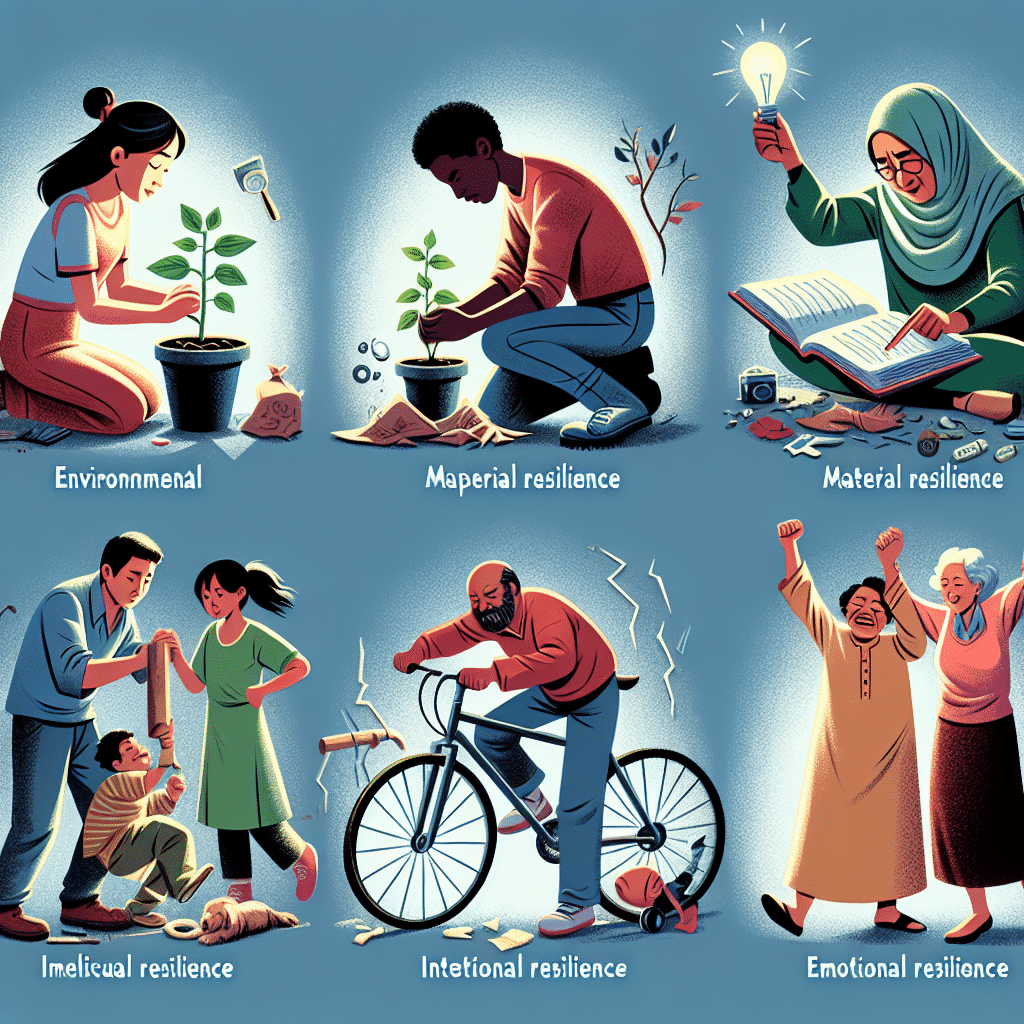
Understanding the transpersonal aspects of communication skills can greatly enhance the quality of our interactions with others. Transpersonal communication goes beyond the surface level of conveying information and delves into deeper connections and understanding between individuals. By incorporating transpersonal elements into our communication, we can foster empathy, mindfulness, and nonverbal communication techniques to create more meaningful and authentic connections.
Transpersonal communication involves a holistic approach to how we communicate with others, considering not only the content of our words but also the intentions, emotions, and energy behind them. This form of communication emphasizes the interconnectedness and shared humanity between individuals, leading to more harmonious and fulfilling relationships.
Whether you are a professional looking to improve your communication skills in the workplace or an individual seeking to enhance your personal relationships, understanding transpersonal communication can be a valuable tool in fostering genuine connections and building trust with others.
Developing Empathy and Active Listening Skills
Empathy and active listening are essential components of transpersonal communication. Developing empathy involves understanding and feeling what the other person is experiencing, allowing you to better connect with them on a deeper level. Active listening, on the other hand, involves fully engaging with the speaker, paying attention to both their verbal and nonverbal cues, and providing feedback to show that you understand their message.
One way to enhance empathy is by putting yourself in the other person’s shoes and trying to see things from their perspective. This can help you better understand their emotions, thoughts, and needs, allowing for a more meaningful interaction. Practicing active listening involves giving the speaker your full attention, avoiding distractions, and providing affirmations or paraphrasing to show that you are listening and understanding.
When developing empathy and active listening skills, it’s important to remain non-judgmental and open-minded. Avoid jumping to conclusions or making assumptions about the other person’s intentions or feelings. Instead, focus on being present in the moment and truly listening to what the other person has to say.
By honing your empathy and active listening skills, you can create a more authentic and meaningful connection with others. This can lead to improved relationships, better collaboration, and a deeper sense of understanding and compassion in your interactions. Incorporating these skills into your daily communication practices can help you cultivate a more transpersonal approach to connecting with others.
Developing Empathy and Active Listening Skills
Empathy and active listening are essential components of transpersonal communication skills. Empathy involves the ability to understand and share the feelings of another person, while active listening entails fully engaging with the speaker by providing feedback and demonstrating understanding.
Empathy
To develop empathy in communication, it is important to practice putting yourself in the other person’s shoes. This involves listening without judgment, showing compassion, and acknowledging the other person’s emotions. By demonstrating empathy, you create a safe and supportive environment for open communication.
Active Listening
Active listening is a key aspect of effective communication. To enhance your active listening skills, make eye contact, nod your head to show you are listening, and avoid interrupting the speaker. Reflect back what the speaker is saying to ensure you have understood their message accurately.
Additionally, ask open-ended questions to encourage the speaker to elaborate on their thoughts and feelings. This demonstrates that you are fully engaged and interested in what the person has to say.
Practicing Empathy and Active Listening Together
Combining empathy and active listening in your communication not only helps you build stronger relationships but also creates a deeper connection with others. When you actively listen with empathy, you are not only hearing the words being said but also understanding the emotions and intentions behind them.
Overall, developing empathy and active listening skills in your communication can significantly enhance the transpersonal aspects of your interactions. By focusing on understanding and connecting with others on a deeper level, you can foster more meaningful and authentic relationships in both personal and professional settings.

Practicing Mindfulness in Communication
Practicing mindfulness in communication involves being fully present and aware of the moment during interactions with others. It requires focusing on the person you are communicating with, their emotions, body language, and underlying message beyond words. By cultivating mindfulness in communication, you can enhance your transpersonal aspects of communication skills and create deeper connections with others.
Focusing on the Present Moment
When engaging in conversations, it is essential to be present and attentive to the person in front of you. Avoid distractions and truly listen to what the other person is saying without planning your response in advance. By staying in the present moment, you can better understand the person’s perspective, feelings, and needs.
Practicing Nonjudgmental Awareness
Mindfulness in communication involves maintaining a nonjudgmental attitude towards the other person. Avoid making assumptions, jumping to conclusions, or criticizing their thoughts or feelings. Instead, strive to cultivate empathy, understanding, and acceptance during the interaction. By being nonjudgmental, you can create a safe space for open and authentic communication.
Engaging in Reflective Listening
Reflective listening is a key component of mindfulness in communication. It involves paraphrasing, summarizing, and reflecting back the speaker’s words to show that you are actively listening and understanding their message. By engaging in reflective listening, you can demonstrate empathy, validate the other person’s feelings, and foster a deeper connection.
Practicing Self-Regulation and Emotional Awareness
Practicing mindfulness in communication also involves regulating your emotions and being aware of your own feelings during interactions. By managing your emotions effectively, you can respond to others with compassion and empathy rather than reacting impulsively. By cultivating emotional awareness, you can enhance your transpersonal aspects of communication skills and create more meaningful connections with others.
Integrating Transpersonal Communication into Daily Interactions
Transpersonal communication goes beyond the surface level of interactions and delves into a deeper connection with others. It involves being fully present, empathetic, and mindful in our conversations, which can greatly enhance the quality of our relationships.
Practical Tips for Integrating Transpersonal Communication:
- Show Genuine Interest: Take the time to truly listen and understand the other person’s perspective without judgment. Ask open-ended questions to encourage meaningful dialogue.
- Practice Empathy: Put yourself in the other person’s shoes and try to understand their emotions and experiences. Empathy allows for a deeper connection and fosters trust in communication.
- Use Nonverbal Cues: Pay attention to your body language, tone of voice, and facial expressions. Nonverbal cues can convey empathy, sincerity, and understanding even without saying a word.
- Be Mindful: Stay present in the moment during conversations. Avoid distractions and fully engage with the other person. Mindfulness helps to reduce misunderstandings and enhances the quality of communication.
- Practice Gratitude: Show appreciation for the other person’s time, thoughts, and feelings. A simple thank you or acknowledgment can go a long way in building positive rapport in communication.
By integrating transpersonal communication into your daily interactions, you can strengthen your relationships, improve your communication skills, and create a more harmonious environment. Remember that effective communication is a two-way street, and it requires effort and mindfulness from both parties involved. Start incorporating these tips into your conversations today and witness the positive impact it can have on your interactions.

Summary
Transpersonal communication goes beyond typical interactions, emphasizing interconnectedness, empathy, and mindfulness in communication. Developing skills such as active listening, nonverbal communication, and practicing mindfulness can enhance the quality of interactions and foster deeper connections with others.
By integrating transpersonal aspects into daily interactions, individuals can create more meaningful and authentic relationships, leading to a greater sense of understanding and unity. These skills not only benefit personal relationships but also contribute to building a more compassionate and interconnected society.
Overall, embracing transpersonal communication skills can lead to more fulfilling and enriching interactions, promoting empathy, understanding, and respect in all forms of communication. It is a powerful tool for creating positive change in both personal and professional relationships.






